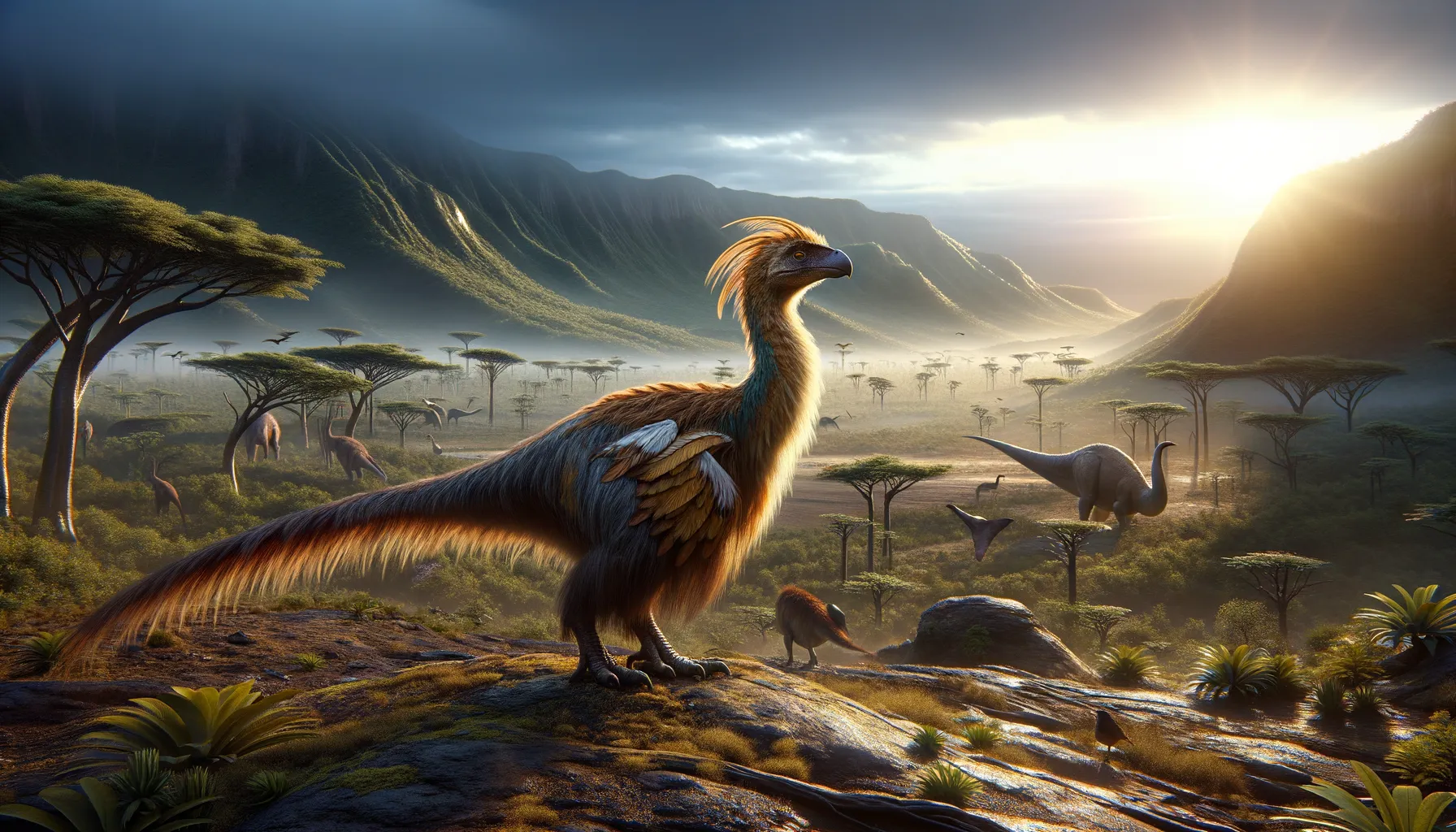
Wulatelong
Feathered wonders of the Cretaceous era.
Period
Cretaceous
Length
Reached about 1.5 meters in length.
Height
Stood approximately 0.5 meters tall at the hip.
Weight
Estimated to weigh around 20-30 kilograms.
Wulatelong is a type of oviraptorosaur, a feathered dinosaur known from the Late Cretaceous period in what is now China. It showcases the diversity of feathered dinosaurs that existed in this era. Its moderate size and likely omnivorous diet, along with its bird-like features, make it an important species for understanding the evolution of theropod dinosaurs.
Diet
Wulatelong had an omnivorous diet, likely feeding on plants, small animals, and eggs. Its beak and jaw structure suggest it could handle a varied diet, adapting to available food sources.
Hunting
It likely foraged for food rather than hunting actively. Its diet might have included small prey, scavenging, and foraging for plants, using its beak to pick food from the ground or vegetation.
Environmental challenges
As a Cretaceous dinosaur, Wulatelong faced shifting climates and changing ecosystems. It had to adapt to the presence of predators and competition from other herbivores and omnivores. The environment of its era was dynamic, with periodic volcanic activity that could impact local habitats. Finding consistent food sources would have been crucial for its survival.
Speed
Wulatelong likely moved at a moderate pace.
Lifespan
It likely lived for several decades.
First discovery
Discovered in the Gongpoquan Basin, China, 2013.
Fun Facts
- Wulatelong is a dinosaur that lived around 70 million years ago during the Late Cretaceous period.
- Its name 'Wulatelong' means 'Wulate Dragon', named after the Wulate region in Inner Mongolia, China, where it was discovered.
- Wulatelong was a theropod, a group of two-legged dinosaurs that includes the famous Tyrannosaurus rex.
- Unlike many of its ferocious theropod relatives, Wulatelong was likely feathered and possibly had a bird-like appearance.
- This dinosaur is known from a single, well-preserved skull, which has provided scientists with valuable information about its species.
- Wulatelong was a relatively small dinosaur, indicating it might have been more agile compared to its larger theropod cousins.
- The discovery of Wulatelong has helped scientists understand more about the diversity and evolution of theropod dinosaurs in Asia.
Growth and Development
Wulatelong, like other dinosaurs, grew relatively quickly after hatching. It is believed to have undergone a series of growth spurts, reaching adult size within a few years. Its development might have been influenced by environmental factors, such as the availability of food and climate conditions.
Habitat
Wulatelong lived in a region that was likely semi-arid with seasonal differences. Its habitat included open landscapes that provided space for foraging. It might have inhabited areas close to water sources, where vegetation was more abundant, providing food and shelter.
Interaction with other species
Wulatelong likely shared its environment with other dinosaurs, including theropods and herbivorous species. It may have competed with smaller herbivores for food resources. Predatory dinosaurs might pose a threat, requiring Wulatelong to remain vigilant.
Natural lifespan
Wulatelong likely lived for 20 to 30 years naturally.
Reproduction
Like many theropods, Wulatelong likely laid eggs. It potentially engaged in nesting behaviors, possibly caring for its young. The number of eggs and clutch size can only be speculated but was likely consistent with other oviraptorosaurs.
Social behaviour
Wulatelong may have exhibited some level of social behavior, potentially forming small groups for foraging. Its interactions could include communication through sounds and visual displays, similar to modern birds.
Fossil locations
Fossils have been found in the Gongpoquan Basin, China. This region has produced several other dinosaur fossils, indicating a rich prehistoric ecosystem. The geology of the area is crucial for understanding its environmental conditions during the Late Cretaceous.
